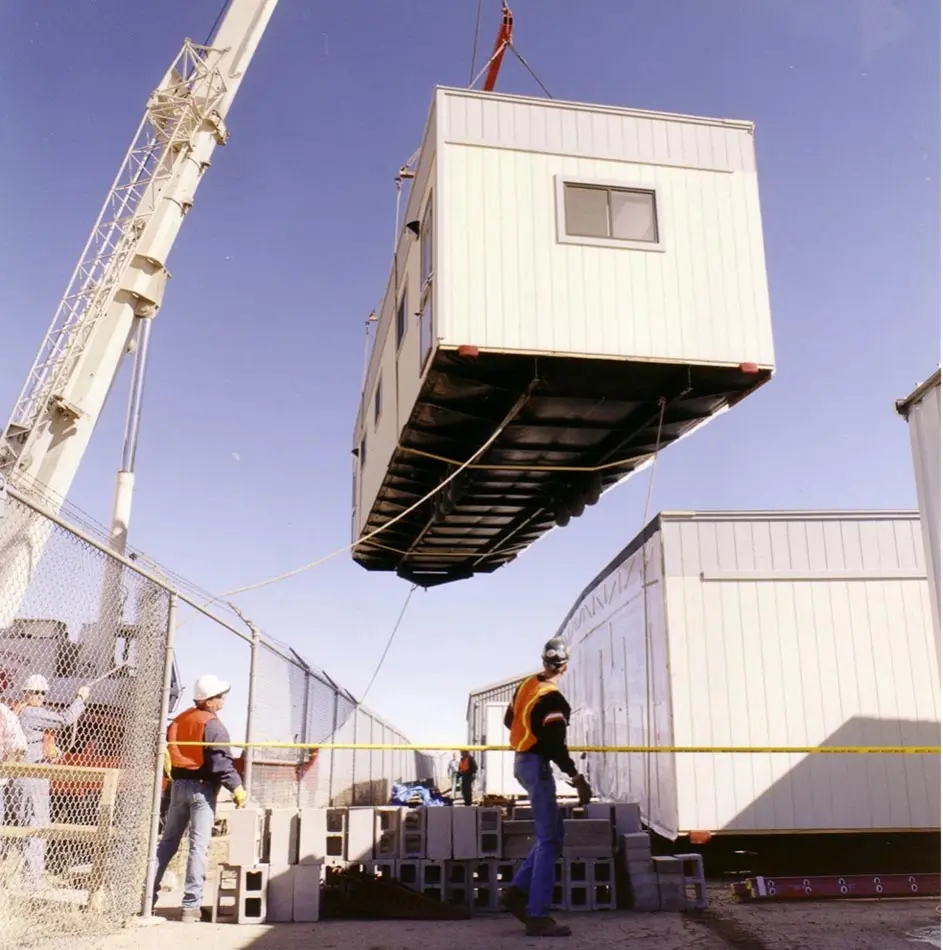
Construction is vital for growth and stability across the United States. From office complexes to hospitals and schools, being able to quickly adapt and build new structures is a crucial consideration for companies and municipalities across the country. As costs increase across the board and companies look for ways to reduce their environmental footprint, an important question often gets raised: Is modular construction better for the environment than traditional construction?
At Satellite Shelters, we’re believers in the efficiency and sustainability of modular construction. Let’s take a look at some of the factors that make modular construction a green alternative to conventional means of building.
Sustainability in Modular Construction
Modular construction is one of the most sustainable methods of building new offices, clinics, classrooms, and more. Because buildings created through modular construction are typically built to exact specifications in a factory, there is reduced waste and energy consumption. In fact, many modular buildings utilize recycled materials as part of the building process.
Off-Site Construction in Controlled Environments
One of the major drawbacks to traditional construction is its reliance on favorable conditions. Adverse weather can set project timelines back by days, weeks, or even months. Rain, hail, and wind can cause damage to structures before they’re completed.
In modular construction, the controlled environment of the factory allows for “around-the-clock” construction to continue without the impact of weather or other factors. There’s also a greatly reduced risk of building material theft, and the assembly line process of manufacturing is efficient, keeping your building project on schedule.
Reduced Construction Debris Removal
Waste is an inevitability, especially in traditional means of construction. Excess building materials and resource usage—including water waste—leads to a lot of discarded materials. In fact, traditional construction generates an estimated 56 million tons of debris each year. That debris ends up in landfills. Thanks to the factory specifications of modular buildings, waste is significantly reduced.
Modular Buildings are Made of Recycled Materials
Recycled materials are a primary component of modular buildings and are just as strong as new versions of those components used in construction. Recycled wood, steel, and aluminum are used to make siding, frames, and roofs. Recycling these materials keeps them from filling landfills and debris piles, eliminating environmental waste.
Repurposed Structures Increase Lifespan of Buildings
In addition to the use of recycled components, modular construction projects can be disassembled and reused in a variety of ways. Temporary, portable classrooms can be relocated throughout a school district as remodeling or renovation projects get underway.
These repurposed structures are also adaptable. If changes need to be made to a modular building’s configuration within the existing structure—such as removal of walls to facilitate larger meeting spaces—that can be done with fairly minimal disruption to nearby buildings. Conventional renovations produce a large amount of waste and debris that’s often difficult to reuse.
Reduced Impact on Environment Near Build Sites
In many cases, traditional construction results in lasting changes to the environment near the build site. Intensive prep work must be done, including excavation and backfilling. Additionally, traditional modes of building often require the presence of vehicles and heavy construction equipment. With modular construction, these requirements are lessened—if not eliminated entirely. As a result, there’s a substantial decrease in area pollution.
Modular Construction Promotes Energy Efficiency
Modular buildings aren’t just greener during construction; they’re also designed and built with ecologically sound and energy-efficient operations in mind. Buildings can feature large, energy-efficient windows that allow plenty of natural light, LED lighting with occupancy sensors, and even high-efficiency HVAC systems backed up by insulation that greatly reduces the need for intensive heating and cooling.
Along with internal components, efficient lighting, and heating and cooling systems, some modular buildings can have solar panels and batteries installed to reduce their reliance on the traditional grid, creating opportunities to conserve even more money and energy.
Choose Satellite Shelters for Greener, Cost-Effective Modular Construction
When your construction project faces tight deadlines and a need for environmentally-friendly building processes, contact Satellite Shelters for your modular construction needs. From schools to medical providers and prefabricated office complexes, modular construction offers flexible building options with modern finishes and amenities.
To learn more about the benefits of modular construction, contact us today for a free quote or find a Satellite office near you to get in touch with a local representative. We can help find the right type of modular building for you, including new construction options, used rentals, leases for existing structures, and more.



